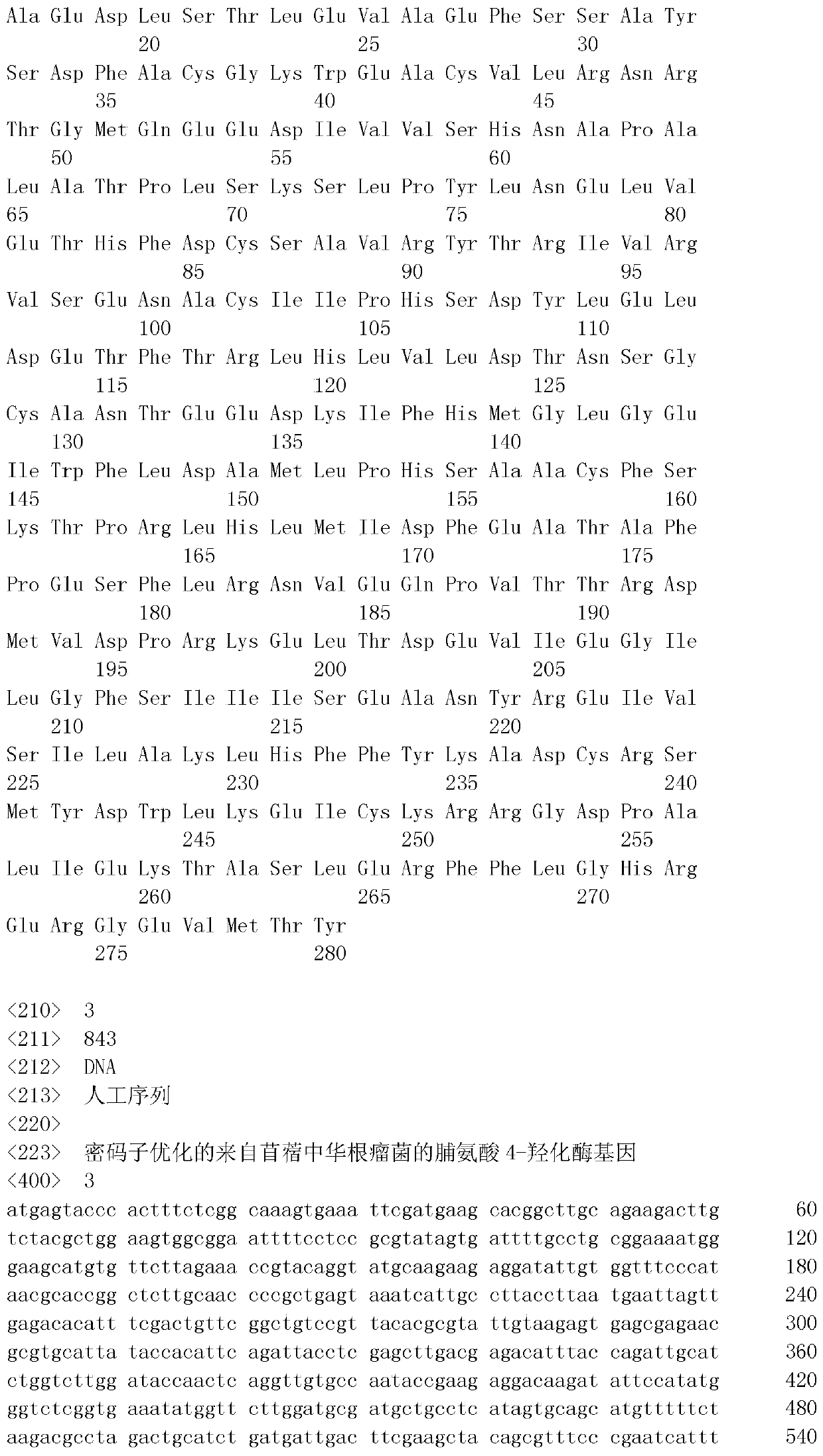Biocatalysts and methods for hydroxylation of compounds
A technology of compounds and substrates, applied in the field of biocatalysts
- Summary
- Abstract
- Description
- Claims
- Application Information
AI Technical Summary
Problems solved by technology
Method used
Image
Examples
Embodiment 1
[0462] Example 1: Synthesis, optimization and screening of engineered proline hydroxylase polypeptides
[0463] Gene Synthesis and Optimization : The polynucleotide sequence encoding the reported wild-type cis-4-proline hydroxylase polypeptide from S. meliloti as represented by SEQ ID NO:2 was synthesized as the gene of SEQ ID NO:1. The synthetic gene of SEQ ID NO: 1 was cloned into the pCK110900 vector system (see eg, US Patent Application Publication 20060195947, which is hereby incorporated by reference) and subsequently expressed in E. coli W3110fhuA. E. coli W3110 expresses a proline hydroxylase polypeptide under the control of the lac promoter. In silico simulation of enzyme structure based on sequence alignment with other proline hydroxylases and docked substrate proline, with active site, peptide loop, solution / substrate interface, and potential stability Positionally related residue positions were identified and subjected to mutagenesis. These first round variants...
Embodiment 2
[0464] Example 2: Production of engineered proline hydroxylase
[0465] Engineered proline hydroxylase polypeptides were produced in E. coli W3110 under the control of the lac promoter. Enzyme preparations for HTP, DSP, and SFP assays were prepared as follows.
[0466] High-throughput (HTP) growth, expression, and lysate preparation . Cells were picked and grown overnight at 30°C, 200 rpm, 85% humidity in LB medium containing 1% glucose and 30 μg / ml chloramphenicol (CAM). A 20 μl aliquot of the overnight growth was transferred to a deep well plate containing 380 μl of 2xTB growth medium containing 30 μg / ml CAM, 1 mM IPTG, and incubated at 30°C, 200 rpm, 85% humidity for ~18h. The cell culture was centrifuged at 4000 rpm, 4°C for 10 min, and the medium was discarded. The cell pellet was resuspended in 100 μl lysis buffer (50 mM phosphate buffer, pH 6.3, containing 100 μM molar salts (i.e., (NH 4 ) 2 Fe(SO 4 ) 2 ), 0.5mg / mL PMBS (polymyxin B sulfate) and 1mg / mL lysozyme...
Embodiment 3
[0469] Example 3: Analysis procedure
[0470] Method 1-HPLC Analysis of HTP Determination Reaction: In a 96 deep well format assay block, 10 μL of the reaction solution was diluted with 230 μL of 5% sodium bicarbonate solution followed by 160 μL of dansyl chloride solution (6 mg / mL dansyl chloride in MeCN). Plates were heat sealed, centrifuged, and placed in an incubator at 55°C for 45 minutes. When the derivatization of dansyl chloride was completed, the reaction solution changed from yellow to light yellow. Where the solution remained yellow, the plate was heated for another 15 min. After incubation, the plates were centrifuged at 4000 rpm for 5 min. A 200 [mu]L aliquot of the supernatant was transferred to a 96 Corning plate for HPLC analysis. The final concentration of substrate was less than 0.25 g / L.
[0471] The quenched reaction was subjected to HPLC analysis under the following conditions.
[0472]
[0473] Conversion of compound (2) to compound (1) was dete...
PUM
 Login to View More
Login to View More Abstract
Description
Claims
Application Information
 Login to View More
Login to View More - R&D
- Intellectual Property
- Life Sciences
- Materials
- Tech Scout
- Unparalleled Data Quality
- Higher Quality Content
- 60% Fewer Hallucinations
Browse by: Latest US Patents, China's latest patents, Technical Efficacy Thesaurus, Application Domain, Technology Topic, Popular Technical Reports.
© 2025 PatSnap. All rights reserved.Legal|Privacy policy|Modern Slavery Act Transparency Statement|Sitemap|About US| Contact US: help@patsnap.com



